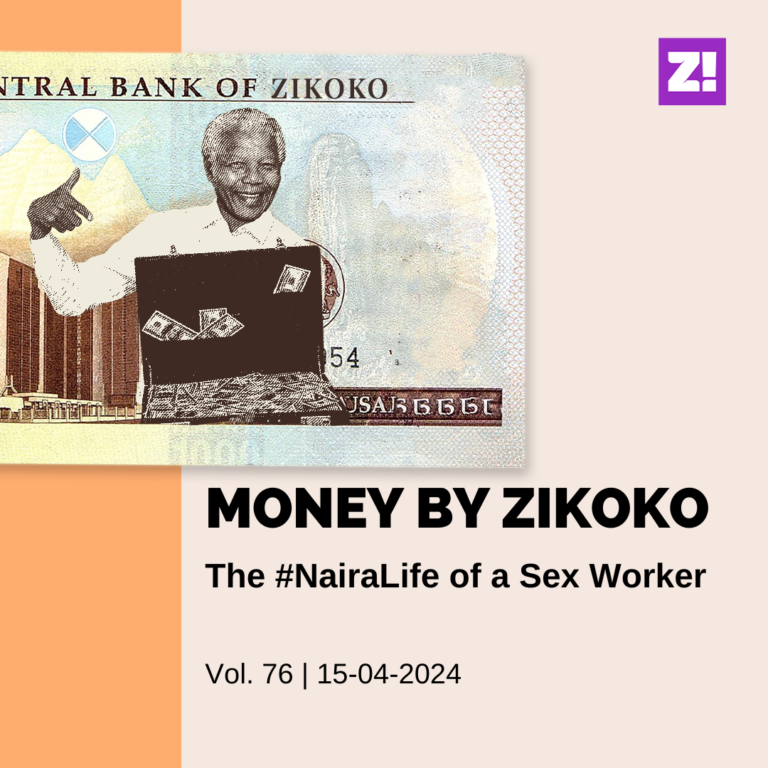Every week, Zikoko will share the hustle stories of Nigerians making it big in and out of the country. With each story, we’ll ask one crucial question in several ways: “How you do am?”

Let’s start with when you got on Twitter
That was in 2017.
I was a second-year student of Mass Communication at the University of Benin. Whenever I was in Lagos, I loved listening to Toolz and Gbemi on the radio, and they mentioned Twitter a lot on their shows. It seemed like a lot of fun happened on the platform. More curious than anything else, I opened my first Twitter account. The plan was to use it like an average user would — just tweet my thoughts into the world.
But something started to happen.
I’m listening
I wanted to have fun on Twitter, and my tweets were a reflection of that. But I didn’t think people would find me funny and relatable. At least not until my follower count started increasing. I was convinced that something was happening here when I got my first viral tweet in 2018. Then another.
I imagine you took something from this
I figured that it was a content game. People will gravitate towards you if they find your content valuable. In my case, people wanted to laugh, and they knew they could come to my account for funny content.
Subsequently, my routine was built around tweeting something that had the potential to be well-received, and get some visibility and new followers off it. Additionally, I was figuring out ways to keep my account engaging. It was about community building as much as it was about content creation.
I see
It still hadn’t occurred to me that I could monetise my account or be contracted to work for brands. I was only doing it because I thought it wouldn’t hurt to be popular on Twitter, and it helped that I didn’t even have to put my face out there.
What specific tactics did you use to grow your account?
A mix of different experiments. At some point, I was on a follow train. This is how it worked: accounts agreed to follow each other and engage with each others’ content to reach more people. I was also a part of retweet groups.
But ultimately, I realised that the greatest hack is putting out quality content. Everything else was secondary.
When did you first realise what the money-making potential could be?
Sometime in 2018, an influencer on Twitter organised a class on influencer marketing and possible ways to monetise Twitter content. I liked what I heard, and while nothing was guaranteed, it was the first time I saw how I could build a brand on the platform.
Also, during a conversation with another influencer, I asked them how much they earned on their last campaign and they told me it was ₦500k. What struck me the most was that they only had to put out two tweets per week for the six months the campaign ran.
I was like, “This can’t be about fun and banter anymore.”
What did you do next?
I devised a plan to up my content game. In practice, this was pretty much giving more thought to the kind of tweets I was putting out. As much as it was about volume, it was also about quality. So I’d take as many days as I needed to craft the right tweet or thread. I was also creating a content bank I could use on days I didn’t have something to tweet about.
It wasn’t the easiest thing to do because I was going through it at the time. For starters, I was a broke university student just trying to figure out his life.
What were your biggest challenges during this time?
Combining creating Twitter content with my school work took a bit of figuring out. The biggest challenge, though, was the cost of data.
I had to be online almost every hour to follow the important conversations. But I couldn’t always afford to do this. Nevertheless, social listening was important, so I constantly had to find ways to afford the data I needed to be online.
I don’t know if I had the conviction that it’d pay off at some point, but it did.
This was when you started getting paid to promote brands?
Absolutely. In 2019, someone sent me a DM and asked if I’d be interested in putting out a few tweets to promote a brand they were working with. They were also going to pay me ₦50k for it.
I was like, “Wait, what?”
It was a pretty big deal for me. This was in 2019.
It took you two years before you could monetise your content
Two long years. But once that first gig came, others followed. In December 2019, I got a lot of gigs and made hundreds of thousands of naira in a single month. That signified something — there was no going back. It was now a business.
I respect the thinking
I realised that I couldn’t build everything about the business on my being funny — I could be hilarious, but I could also be other things. So I started looking into other niches, settling on freelance writing because I was doing it on the side.
I also started talking about my freelance work and creating useful content around it.
This gave me a chance to diversify my income sources. I was using my clout to promote my writing. If a tweet or thread went viral, I’d plug my writing services underneath it. People reach out to you for what they know you can do. So I was working with brands to achieve visibility, working on writing projects with other clients and getting paid for both.
I’m curious, how do you get gigs as an influencer?
Your social media account’s visibility and engagement levels matter a lot; that’s how you get noticed. If you’re right for a campaign, a brand or marketing agency will reach out and have a conversation with you. If the gig is right for you, you accept it and discuss the terms.
Word of mouth also goes a long way in getting gigs. I’ve gotten some jobs just because someone who follows me talked about me in a board meeting.
Must be nice. Walk me through what happens after you accept a gig
The campaign starts and runs in three stages: ideation, execution and review.
You work with the brand or the agency on the best way to promote their brand. Once this is settled, you get to work, execute and get results. KPIs and deliverables are attached to every campaign, so there are numbers to track and hit.
After the campaign runs its course, every party involved reviews and measures the success of the campaign.
How do you decide how much to charge for a campaign?
The standard is having a rate card. As my followers and engagement increase, so does my pricing. Sometimes, I look at how much other influencers in my network charge and tailor my rate card accordingly.
What challenges or setbacks do you deal with now and how do you navigate through them?
Content drought is probably the most prominent. It’s tough when you’re short of content ideas, but it comes with the territory. That said, the drought never lasts. When it happens, I just relax and continue to show up.
It also doesn’t matter how good your content is, if the algorithm is not in your favour, everything goes to waste. Nevertheless, I find that this is also temporary. If you keep putting effort into creating, it’ll swing back in your favour.
Fascinating. What’s your favourite thing about what you do?
Beyond the monetary gains, visibility comes with additional perks.
For example, when I served in 2021, I was posted to a village in Nasarawa state. Only one network had good service there, so I needed a new sim card. But I didn’t know who to turn to. I tweeted about it, and the manager of the telecom company in Lafia found my tweet, reached out and made sure I got set up on the network at no cost.
Random events like this mean a lot. The community I’ve built has been the most rewarding part of this journey.
Speaking of community, how do you engage with your audience and build meaningful relationships on the platform?
My hot take is that if your followers haven’t started calling you by your real name, you need to work more. I try as much as possible to let my audience feel like they know me and can trust me. And the trick here is to constantly engage them.
Love it. What’s the most valuable lesson you’ve learned in the past few years?
It’s important to follow the social media platform rules. I can’t talk about this enough. The barrier to entry is relatively low, but it comes with its drawbacks, too. I can’t imagine the thought of losing my Twitter account — I’ll probably start and grow a new one, but it’s a lot of work.
The goal now is to reinvent myself as much as I can and diversify my sources of income. I do some work outside of Twitter already, which is important. The next thing on my list is to experiment and invest in more content formats, then build strong communities on other social media platforms, especially Instagram.
At the end of it all, making a living on social media all comes down to the strength of your community.
Also Read: How Fisayo Fosudo Went From Graphic Designer to Top Visual Storyteller
Hustleprint stories drop every two weeks on Wednesdays at 12 p.m. WAT, and Hustleprint guides will drop in the interim weeks.
So you can follow each drop, Hustleprint will be published in our money newsletter.




